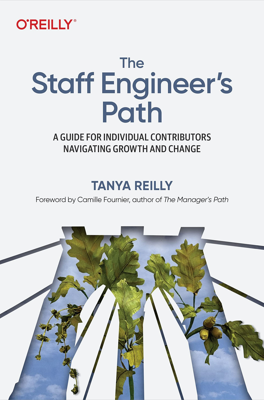Good Influence at Scale
Good Influence at Scale
The Concept of Influence
Influence as a staff engineer goes beyond individual contributions; it involves enhancing the skills and standards of peers and the broader engineering culture. Good influence ensures better engineering across teams, which translates to improved software and business outcomes.
Three Tiers of Influence
- Individual: Direct engagement to uplift an individual’s skill set.
- Group: Extends influence by developing skills or changing approaches among multiple people at once.
- Catalyst: Establishes frameworks or structures that enable continuous influence, even after personal involvement ends.
Mechanisms of Influence
Advice
- Effective advice starts by ensuring it is solicited and welcomed. Unsolicited advice should be offered cautiously and ideally transformed into more formal mediums like blogs when not directly sought.
- Individual level involves mentoring, answering questions, and giving peer feedback at reviews.
- Group level can be scaled through tech talks, documentation, and articles.
- Catalyst involves setting up mentorship programs or tech talk events to ensure advice benefits a broader audience, and continues independently.
Teaching
- Teaching aims for deeper understanding and application, not just advice acceptance.
- Individual level includes code reviews and direct coaching.
- Group level teaching can be executed through workshops, classes, and onboarding materials.
- Catalyst tier involves training others to teach, thereby multiplying the impact of the original training session or resource.
Guardrails
- Guardrails support safe and autonomous working environments, ensuring individuals can operate without causing or encountering significant harm.
- On an individual level, this includes code and design reviews.
- Group-based guardrails might be more systematic, like introducing processes or robots that automatically enforce coding standards or operational policies.
- As a catalyst, changing the culture to embed certain guardrails as standard practices is the highest level of scaling guardrails.
Opportunities
- Creating avenues for professionals to grow through actual work experience and responsibilities.
- Individual opportunities could be through direct delegation of meaningful projects or sponsorship where one advocates and opens doors for others.
- Macro opportunities involve creating a culture where opportunities are recognized and extended widely, ensuring that even in the absence of direct intervention, individuals have paths to growth.
Conclusion
The emphasis is on using one's position and capabilities as a staff engineer not only to perform well personally but to actively and strategically lift up those around, thereby enhancing the overall standard and capabilities of the engineering organization. This influence can be exerted through advice, teaching, providing guardrails, and creating opportunities, each contributing significantly to sustained growth and improvement across the engineering landscape.
